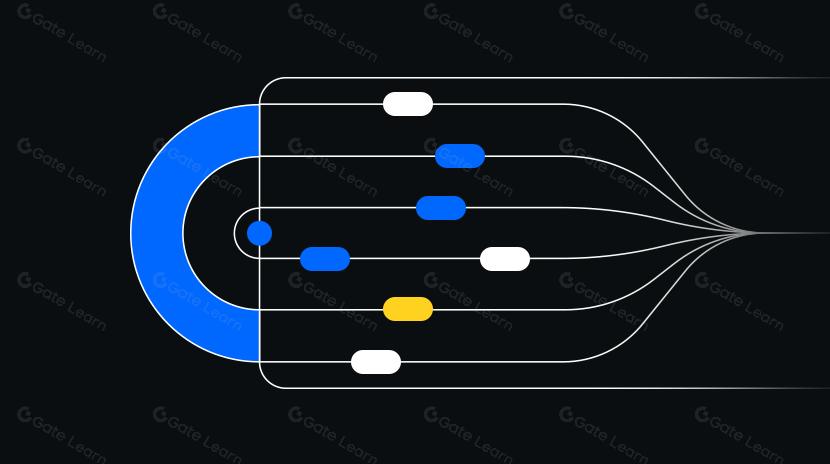A DEX Attempting to Combine the Advantages of CEXs and DeFi: A Detailed Explanation of What Orderly Network Is
Orderly Network is a Layer 2 decentralized trading protocol and modular ecosystem built on NEAR.

Background brief introduction
With the rapid development of DeFi and blockchain technology, many centralized exchanges (CEXs) like Coinbase, Binance, and Kraken have emerged within the industry. However, these centralized platforms often face issues, particularly concerning transparency and asset control. There have been numerous instances in the past where CEXs went bankrupt or disappeared, leaving users in the lurch. For example, in 2022, the bankruptcy of FTX saw user assets misappropriated, resulting in many users’ assets being frozen or lost.
On the other hand, while early decentralized exchanges (DEXs) offered advantages in terms of transparency and decentralization, they struggled to compete with centralized platforms in areas like liquidity, trading speed, and user experience.
Orderly Network was created in response to this context. It combines the liquidity and trading speed advantages of CEXs while preserving the transparency, sovereignty, and on-chain settlement features of DeFi. The aim is to build an efficient trading ecosystem that meets users’ needs for liquidity and speed while maintaining decentralization and transparency.
Detailed explanation of the mechanism
In simple terms, to address the issue of insufficient liquidity in DEXs, one of Orderly Network’s solutions is its innovative cross-chain liquidity aggregation mechanism. By pooling liquidity from multiple blockchains, it provides a broader range of asset pools and tighter spreads.
Traditional DEXs are often limited to a single blockchain, leading to liquidity being dispersed across different chains, making it difficult to fully utilize. Orderly Network, however, aggregates liquidity from multiple blockchains—such as Arbitrum, Optimism, Polygon, and Base—into a unified order book.

By aggregating liquidity from multiple blockchains, Orderly Network is able to offer a broader range of asset pools, catering to different users’ trading needs while reducing the spread between buy and sell orders. This allows users to trade closer to market prices, minimizing slippage.
Additionally, Orderly Network employs a unified order book mechanism, where users can trade across different blockchains, but all transactions are managed within a single order book. This mechanism eliminates the typical need for bridging operations when conducting cross-chain transactions, making cross-chain trading more seamless and efficient. By concentrating liquidity onto a unified platform, Orderly Network effectively addresses the issue of liquidity fragmentation, enhancing overall market depth and trading efficiency.
The on-chain order book system also features a Perps aggregator, which can record and manage all buy and sell orders in real time. Through the order book, the aggregator can quickly match buy and sell requests, ensuring fast execution of trades. One of its target audiences is leverage traders, who can use perpetual contracts for hedging or speculation. The aggregator provides fast trade execution and deep liquidity, enabling traders to carry out leveraged operations with greater efficiency.
It’s also worth noting that this on-chain order book serves as a flexible and robust infrastructure for decentralized applications (dApps). Developers can leverage this on-chain order book to build modular dApps, ranging from simple trading interfaces to complex financial instruments like perpetual contracts and lending platforms. Furthermore, Orderly Network offers plug-and-play SDKs and APIs, allowing developers to easily integrate order book functionalities into their dApps without having to develop complex trading systems from scratch. This significantly reduces development costs and time.

For trading users, dApps can access real-time market prices and order matching information through the on-chain order book, providing an efficient and transparent trading experience. By integrating Orderly Network’s cross-chain liquidity, dApps can tap into liquidity from multiple blockchains. Whether on Ethereum, BSC, or other blockchains, dApps can leverage the liquidity resources of a single order book. Moreover, this on-chain order book prioritizes efficient trade execution, allowing user orders to be quickly matched and executed, thereby reducing the risks of trade delays and failures.
Building on the NEAR blockchain also brings significant benefits to Orderly Network. One major advantage is its scalability: NEAR uses a sharding technology called “Nightshade,” which allows the network to scale horizontally. Each shard processes a portion of the network’s transactions and data, so even with a substantial increase in transaction volume, NEAR can maintain efficient operation. This scalability is crucial for supporting data-intensive platforms like Orderly Network, which need to handle a large number of orders and transactions.
In terms of transaction speed, NEAR’s block time is approximately 1 second, with transactions typically confirmed within 1-2 seconds. This fast confirmation capability enables Orderly Network to offer near real-time trading experiences, minimizing the risks of trade delays and failures. NEAR’s design, with high throughput and low-latency transaction processing, ensures that the platform can quickly match buy and sell orders, allowing trades to be executed rapidly without being affected by network congestion.
Additionally, Orderly Network integrates with both EVM and non-EVM blockchain ecosystems, supporting popular Layer 2 chains such as Arbitrum, Optimism, and Polygon PoS, as well as the non-EVM NEAR protocol.

$ORDER token
Orderly Network’s native token, $ORDER, serves as the core driver of the Orderly Network ecosystem.

Here are the specific functions of the $ORDER token:
- Governance Rights: As the governance process is formalized, staking $ORDER allows token holders to participate in the decentralized governance of key aspects of the Orderly Network. More details will be released in due course.
- Earning VALOR: VALOR measures users’ $ORDER staking based on the amount and duration, giving users the right to receive a corresponding share of the protocol treasury.
- Increased Trading Rewards*: By staking $ORDER, traders can earn a higher share of trading rewards.
- Enhanced Market Maker Rewards: Staking $ORDER allows market makers to earn more market-making rewards.
- Additional Utilities: Other utilities for the $ORDER token will be introduced in upcoming Orderly Network products and third-party DeFi protocols.
The maximum supply of $ORDER tokens is 1,000,000,000, and the distribution is as follows:

Release times are as follows:

Performance analysis
According to DeFiLlama data, as of August 20, Orderly Network has a total value locked (TVL) of $21.15 million. The 24-hour trading volume is $136,843, while the 24-hour derivatives trading volume has reached over $190 million. Additionally, the platform has a user base of over 215,000 unique wallets.

Additionally, Orderly Network has achieved notable funding success. According to disclosed information, the project has raised a total of $25 million across three funding rounds, with support from prominent investors such as Pantera, GSR, Dragonfly Capital, and Jump Crypto.

In summary, with its innovative infrastructure and strong partnerships, Orderly Network is poised to become a major player in the future of DeFi trading. However, it faces challenges: while Orderly Network offers fast trading and deep liquidity, its success largely depends on its ability to continuously attract enough users and liquidity providers. Additionally, the effectiveness of the $ORDER token’s economic model in incentivizing long-term participation, rather than merely serving as a short-term speculative tool, is a key point of interest. We look forward to seeing how Orderly Network develops in the future.

Disclaimer:
This article is reproduced from [chain teahouse], the copyright belongs to the original author [Waiter in the teahouse], if you have any objections to the reprint, please contact the Gate Learn team, and the team will handle it as soon as possible according to relevant procedures.
Disclaimer: The views and opinions expressed in this article represent only the author’s personal views and do not constitute any investment advice.
Other language versions of the article are translated by the Gate Learn team and are not mentioned in Gate.io, the translated article may not be reproduced, distributed or plagiarized.
Related Articles

In-depth Explanation of Yala: Building a Modular DeFi Yield Aggregator with $YU Stablecoin as a Medium

Exploring 8 Major DEX Aggregators: Engines Driving Efficiency and Liquidity in the Crypto Market

Sui: How are users leveraging its speed, security, & scalability?

What Is Copy Trading And How To Use It?

AltLayer Explanation: Aggregation as a Service
